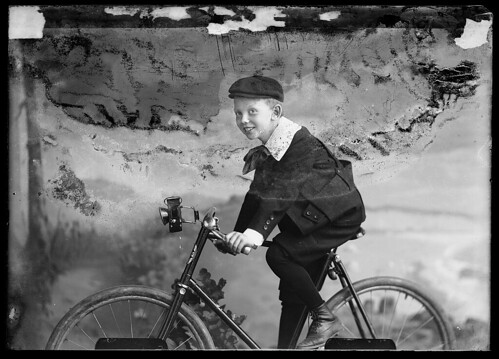 Bicycle: The Definitive Visual History by DK Publishing
Bicycle: The Definitive Visual History by DK PublishingMy rating: 4 of 5 stars
This is a coffee table book with very nice photographs of bicycles, from the 1800s to today, presented in the usual "floating against a white background" approach used in Dorling-Kindersley way.
This is DK.com's information about the book that includes some images of the pages. It says, "To tell the complete story of cycling, Bicycle profiles famous cyclists, manufacturers, and brands, and includes detailed images, maps, and histories of key races and competitions - from the first recorded race in 1868 to the Cyclo-cross World Championships to the Tour de France, triathlons, Olympic racing, and more."
My local public library purchases books like this and I like to check them out and page through them, enjoying the photographs and reading the captions. Sometimes I even buy a few (very few) of these often not inexpensive books. Still, the pleasure generally is in the photography - and this book has a lot of good photographs of books. But to suggest this tells "the complete story of cycling" even at some summary level is silly - it doesn't.
Here is just one simple example - a significant (enough) recent development that now seems to be dying out was the messenger cyclist-fixed gear trend. After all, there were several different movies celebrating bicycle messengers over almost twenty years, from Kevin Bacon's "Quicksilver" to Joseph Gordon-Levitt's "Premium Rush." For the world of bicycling, it was interesting to see how the "classic" messenger bicycle evolved, at first a fixed gear created from a castoff 1970s road bike that might or might not have brakes since the easiest way to stop was to cease pedaling - and which was great for messengers because it was easily maintained, cheap, and at the same time unattractive to theft. Then others, mostly young, began converting bikes to "fixies" but with hubs that would freewheel since riding a true fixed gear bike is uhm kind of annoying, followed by fixed gear bikes (that weren't actually fixed) being sold by various companies new, primarily to so-called "hipsters." (When I checked with Google on the continued connection between fixies and hipsters, I learned that, "Hipster’s and fixies go together like Donald Trump and being completely out of sync with the reality of everyday life." Yeah.)
Now it isn't like fixies are a big part of cycling history, but given some of the more obscure stuff the book does include, largely because people like photographs in coffee table books of obscure visually interesting stuff, then it seems hard to agree this book is anything like "complete." Rather, it is "selective."
OK, here's another example - bike share is a not a type of bike, but bike share bikes are a type that would seem necessary to cover in the "complete story of cycling." Not mentioned.
As someone who is somewhat interested in older Japanese bikes (Nishiki, Bridgestone, Univega, others) that had some popularity in the US before the Yen made them too expensive, I eventually noticed the strong Eurocentric and even UK-centric coverage. Cannondale has a fair number of examples included, followed by Specialized and Trek, but that's pretty much it for today's US companies.
There are some aspects that are to me really quite strange. Bikes are captioned with information about the origin (country), the frame material (ie, steel), gears (number of), and the size of the wheels in inches. The country of origin is the country of corporate ownership, not of the manufacture of the frame, which is how most people think about it. Or companies - Cannondale bikes that are "made in the USA" are bikes with American assembled frames, but many of the components come from Asia - the overall dollar value of the inputs to create a Cannondale in some cases might be less than 50 percent US. But for an example of a "hybrid" they have a Mongoose identified as "origin=US" which may be true as far as who owns Mongoose, but the bike was assembled from Asian components in Taiwan (or maybe China) but anyway, not in the US. And the way they measure wheels is odd, too - all the road bikes are described with 28 inch wheels, whether they are older ones with what are usually called 27 inch wheels or more modern road bike wheels that are a somewhat larger size that are usually said to be 700 mm wheels.
There are pages that point out the importance of the Pigeon bicycle for China. Another inset notes that bicycles are important in the developing world with a photo of some poor fellow riding his cargo laden bike in Kabul. Otherwise this is about bikes in the developed world, mostly Europe and somewhat the US. Which doesn't exactly correspond either to where the bicycles are made nowadays or where most of the bikes in the world are. But OK.
View all my reviews of cycling books on GoodReads.
![After the [Bicycle] Ride-1897](https://c2.staticflickr.com/6/5469/31023578281_8f00432621.jpg)





